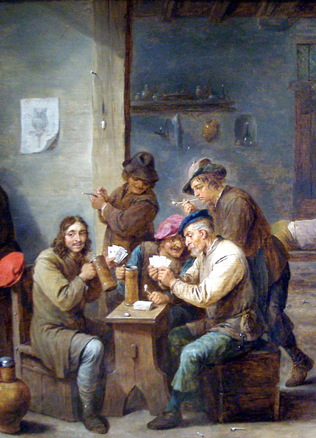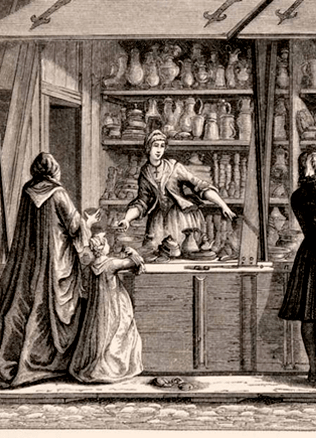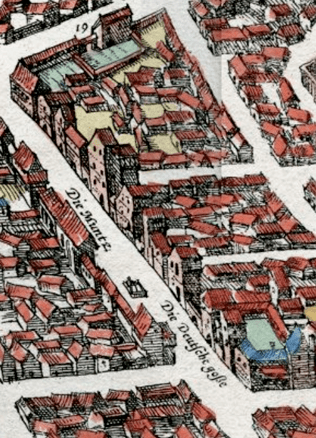Water mills in Lithuania in the 15th-16th centuries: a slow technical revolution
Ancient civilisation already knew how to use energy of flowing water however, it was the civilisation of Western Europe in the Middle Ages that developed a dense network of water mills. A decisive role was played by the abundance of rapid rivers in Europe and constantly increasing areas under crops, and later adaptation of mill equipment in different technologies: smithies, sawmills, making paper by drawing off ground water. From the technical point of view the history of western water mills seems to have developed independently of experience of other civilisations though the initial stimulus might have come from elsewhere.
Essential discoveries in the sphere of water mills were made by the antique Greek and Roman civilisation. In the third century BC the Greeks already had a water wheel and toothed gearing: In the first half of the first century BC, the Romans used a vertical wheel instead of the horizontal Greek one. This innovation lead to one of the greatest achievements in mill technology: the appearance of the gear. It enabled the movement of the vertical water wheel to be changed into a horizontal movement of the grindstones. At that time three types of water wheel became established: a wheel that was tuned by water flowing from below (making use of kinetic energy of water); the wheel that was turned by water flowing from above; the wheel, which was moved by a stream of water flowing into the middle of the wheel (both used potential energy of water). Right till the first half of the 20th century this construction of the mill changed very little. In the early Middle Ages the largest part of the antique inventions was forgotten. From approximately the 11th century, however, technologies of water mills spread rapidly in Western Europe, and later – further into the East. In the Middle Ages it was mainly monks who popularised them, especially the Cistercian (the Order of Cistercians (Latin Cistercienses) is an “enclosed roman Catholic order of Monks created in France in 1098).
“Harnessed” Lithuanian rivers
The first mills in the history of Lithuania were mentioned during the Christian period therefore there is no reason to doubt that this technology came from the West.
Most probably it did not take the only road. The first hints about the mills can be dated back to 1404 when by Raciąź agreement Władysław II Jagiełło and Vytautas allowed the brethrens of the Teutonic Order who ruled Samogitia at that time to build water mills on both banks of the Nevėžis River. We do not know if the Teutonic Order that ruled Samogitia until 1409 managed to make use of this permission. Even if the Germans built the mills the latter did not operate later because they were not mentioned in the sources. The earliest data about the mills in the Grand Duchy of Lithuania date back to the end of Vytautas’ reign. On 31 January 1429, following the Congress of Lutsk, Vytautas granted his miller Petras Luba (Lat.: Petri Luba molendinatoris nostri Lucensis) the privilege to manage the local mill and receive income from it as long as he lived. According to the text of the privilege, Luba built the bridge and the mill at his own expense. The miller of Lutsk most probably was from Mazovia, it is believed that the structure of the mill had to be moved to Lithuania from there. The bridge and the dikes mentioned in the privilege indicate that the mill was build below the dam. In one way or another there was a bridge over the dam.
The sources of the second half of the 15th – the first half of the 16th century mention mills ever more often, however, almost always without any specific contents. Perhaps most often mills were mentioned in sales or donation documents of the holdings of the nobility. They throw some light on the geographical range of the mills – the western part of the Grand Duchy of Lithuania (with the exception of Samogitia) in which large holdings of the nobility, dukes and church were located.
Landowners took care of their property therefore the condition of the mills was determined by laws too. Article 11 of Chapter 8 of the First Statute of Lithuania (1529) specified the following: “If anyone had an entire river in his ancestral land, that is, both of its banks, and built ponds and mills on it and flooded upper mills of their neighbours, they have (…) to lower water and according to the reasoned proof compensate the flooded one for the harm done.” The provisions of the Statute allow us to understand that the then mill was related exclusively to water mills.
They were built on the banks of a river, a lake or a pond; to keep water higher the banks of the ponds or the flooded part of the river before a dam were consolidated by dykes; a narrow canal or a narrow gutter was left in the dams for water to flow, which directed the falling water straight under (or on) the wheels of the mill. Structures of the mill and the dam were made of wood, and it is not by chance that the Statute provided for precedents of burning of a mill or chopping the dam. We learn about the seasonal features of work of the then mill from the unique 1551 Pasvalys dean’s income register: about the beginning of work – after floating of the ice (April) and the dry summers that put a stop to work for a long time when the river became so shallow that it could not move the millwheels.
Grindstones grinded very slowly
More exact data about technology of Lithuanian mills come from the middle of the 16th century when after the volok reform almost entire agricultural economy reoriented itself towards growing corn. But even at that time neither the network of mills became denser nor technology of mills improved. Long winters, dry summers, poor yields, undeveloped communications and low local consumption impeded progress. All that prevented Lithuania from making use of the advantage offered by the mills to the full. That was why even in the second half of the 16th century mills were mentioned in the inventories of the Lithuanian estates rarer than manual grindstones were. Even in those cases when mills are described in the inventories in more detail the impression forms that they were not highly valued.
For example, the picture of the mill of Graužai estate (near Kelmė) from the 1595 is as follows: “there is a dam near the estate… on the (bank) of the Vilbėnas River where there is a mill with an old rotten mill building (!), and there is nothing inside the building, the gutters are rotten, the wheel is broken, the entire (building) is ruined. A bank is made next to the dam. Everything is to be repaired”. We see from this description that people of that time clearly distinguished a mill from the mill building, hence the existence of mill equipment did not necessary mean that they were inside the building.
The most important equipment of a mill that is most often mentioned in the inventories was a millwheel and a grindstone.
All other parts were made of wood (axles, gearing, gutters), they were not even assessed separately. From a technical point of view, however, each part mentioned was complicated, it could be improved and made using different technologies. Unfortunately, we know almost nothing about that.
Do You Know?
Most likely that grindstones of the oldest mills mentioned from the 15th century were brought to Lithuania but later they were made locally. This supposition is made on the basis of the Lithuanian names of places: Girnakaliai, Girnikai, Girninkai, Girniūnai, Girkaliai.
Though Lithuanian sources do not show that but we can draw the conclusion from a better documented analogy of the mills of Poland that two types of millwheels were extremely widespread in the Grand Duchy of Lithuania: the wheel turned by water flowing from below (koło walne, koło podsiębiernie), and the wheel turned by water falling from above (koło korzecznie, koło nasiębiernie). According to the historians, the first type was older. The second type began to spread in Poland from the first half of the 16th century but it did not oust the first type of the millwheel: From the 16th to the 18th century both types were used sometimes even in the same mill. There is no reason to think that the case was different in Lithuania. For example, we see the wheel, which catches the flow of the Neris River by its lower part in the view of Vilnius placed in the city Atlas by Braun. Meanwhile the mention of gutters in the inventories indicates indirectly the use of the millwheel turned by water falling from above.
Another complicated equipment of the mill was stone millstone. It consisted of two grindstones: the lower one was immovable and the upper one was turning, moved by the millwheel. It is believed that the oldest millstones of the mills were brought to Lithuania but later they were started to be manufactured locally. It is difficult to say if they existed until the middle of the 16th century.
After learning how to make equipment necessary to the mills from the local materials, there were no technical obstacles left for the network of mills to become denser. Unfortunately, we have no exact list of water mills of the 16th – 18th centuries. Perhaps the most detailed illustration (census) of the mills of the Grand Duchy of Lithuania in 1777 also lacks data from many districts. One can only guess that at that time there were about 4 000 water mills in the country with 1 200 of them being in the territory of the present-day Lithuania. The largest part of this network had to form before great disturbances in the middle of the 17th century.
Eugenijus Saviščevas



